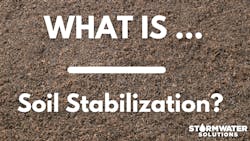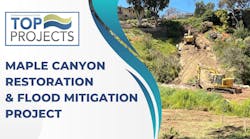Commonly, soil stabilization refers to the physical, chemical, biological, mechanical or combined method in an engineering process to protect soil again stormwater runoff and more.
As the Rhode Island Department of Environmental Management said in its construction site fact sheet, “to effectively control erosion, you need to protect and stabilize bare and disturbed soils and slopes using seasonally appropriate techniques.”
Soil stabilization is a common occurrence in erosion control projects and practices, as we will explore below.
What are the examples of soil stabilization?
Soil stabilization is important not only on construction sites but is also beneficial when it comes to erosion control and land restoration practices.
For example, in Maui, where forest fires left devastation, the Kula Community Watershed Alliance has worked to revitalize over 200 acres of land. As of December 2023, community volunteers helped stabilize 7 acres of land using wood chips made out of invasive wattle trees.
As a previous Stormwater Solutions article stated, “There are several key variables to consider when applying soil stabilization methods. The soil qualities, weather and duration of stabilization are some of the most important factors: each one will decide the effectiveness of a stabilization technique.”
To read the full “What to know about soil stabilization” article, click here. The articles covers approaches to soil stabilization, variables behind stabilization and more.
About the Author
Katie Johns
Editor-in-Chief
Katie Johns, editor-in-chief of Stormwater Solutions, graduated from the University of Missouri in 2016 with a Bachelor of Journalism and a Bachelor of Arts in Spanish. Johns joined the Stormwater Solutions team in September 2019. Johns also helps plan the annual StormCon conference and co-hosts the Talking Under Water podcast. Prior to entering the B2B industry, she worked as a newspaper reporter and editor in Sarasota, Florida, and a magazine assistant editor in the Chicago suburbs. She can be reached at [email protected].



